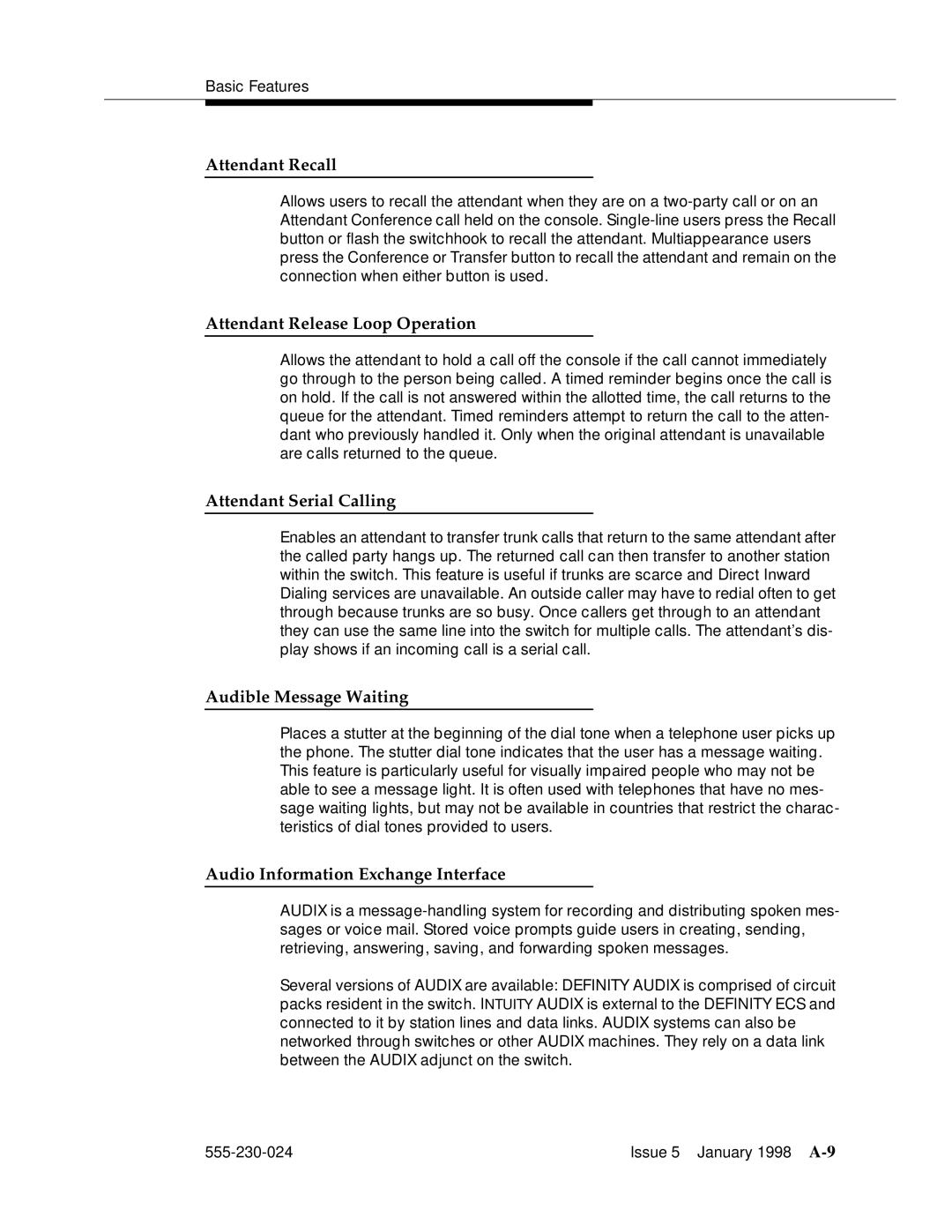
Basic Features
Attendant Recall
Allows users to recall the attendant when they are on a
Attendant Release Loop Operation
Allows the attendant to hold a call off the console if the call cannot immediately go through to the person being called. A timed reminder begins once the call is on hold. If the call is not answered within the allotted time, the call returns to the queue for the attendant. Timed reminders attempt to return the call to the atten- dant who previously handled it. Only when the original attendant is unavailable are calls returned to the queue.
Attendant Serial Calling
Enables an attendant to transfer trunk calls that return to the same attendant after the called party hangs up. The returned call can then transfer to another station within the switch. This feature is useful if trunks are scarce and Direct Inward Dialing services are unavailable. An outside caller may have to redial often to get through because trunks are so busy. Once callers get through to an attendant they can use the same line into the switch for multiple calls. The attendant’s dis- play shows if an incoming call is a serial call.
Audible Message Waiting
Places a stutter at the beginning of the dial tone when a telephone user picks up the phone. The stutter dial tone indicates that the user has a message waiting. This feature is particularly useful for visually impaired people who may not be able to see a message light. It is often used with telephones that have no mes- sage waiting lights, but may not be available in countries that restrict the charac- teristics of dial tones provided to users.
Audio Information Exchange Interface
AUDIX is a
Several versions of AUDIX are available: DEFINITY AUDIX is comprised of circuit packs resident in the switch. INTUITY AUDIX is external to the DEFINITY ECS and connected to it by station lines and data links. AUDIX systems can also be networked through switches or other AUDIX machines. They rely on a data link between the AUDIX adjunct on the switch.
Issue 5 January 1998 |
